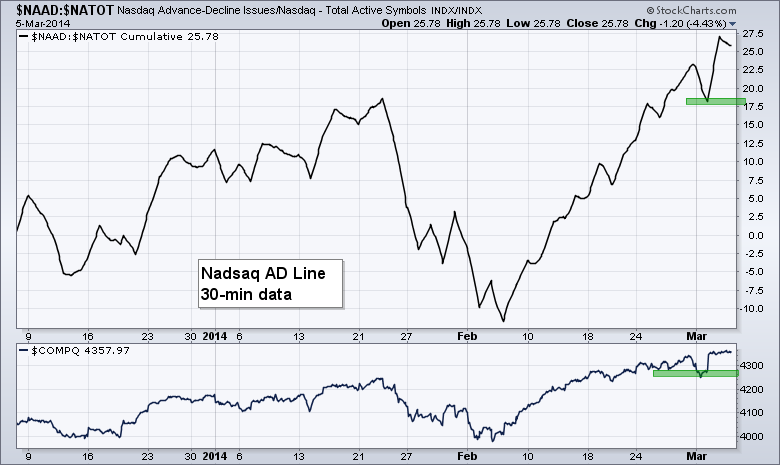Stocks meandered on Wednesday and the major index ETFs finished mixed. The Russell 2000 ETF (IWM) edged lower as the S&P 500 SPDR (SPY) closed slightly higher. The sectors were also mixed, but we saw relative strength from the Consumer Discretionary SPDR (XLY) and the Finance SPDR (XLF), which gained 1%. The Energy SPDR (XLE) fell 1% as oil prices slid. With Monday's decline and Tuesday's surge, the intraday AD Lines for the Nasdaq and NYSE established reaction lows to base short-term support. Chartists can also use the Monday's lows for the Nasdaq and NY Composite. The trends are currently up on all four. Support breaks in the AD Lines, Nasdaq and NY Composite would reverse these uptrends.
**This chart analysis is for educational purposes only, and should not
be construed as a recommendation to buy, sell or sell-short said securities**

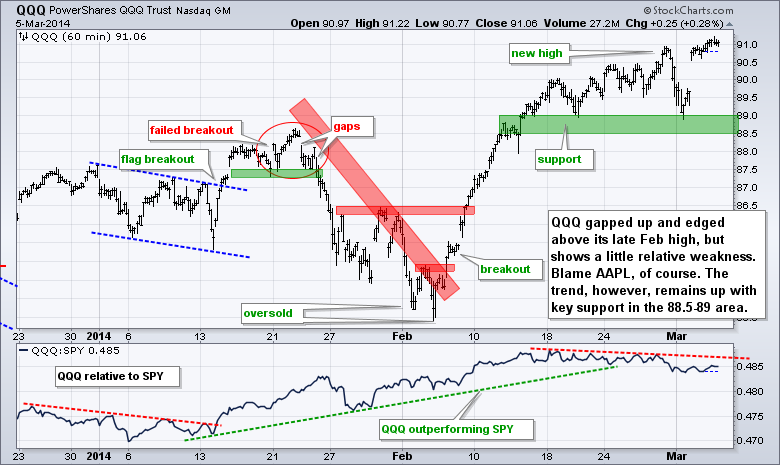
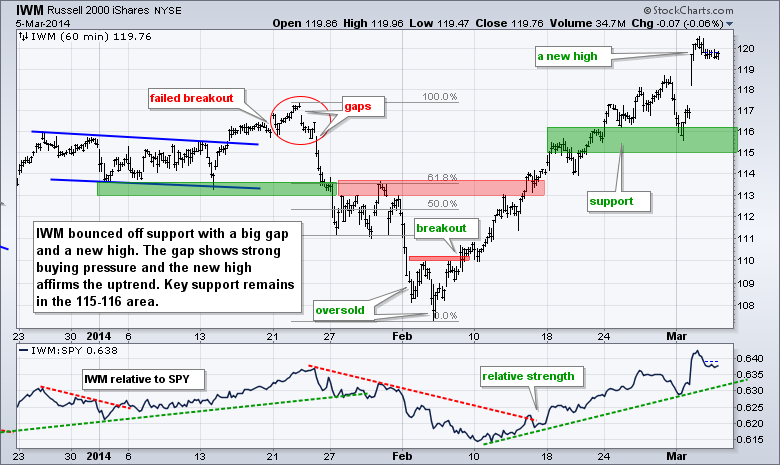
**************************************************************
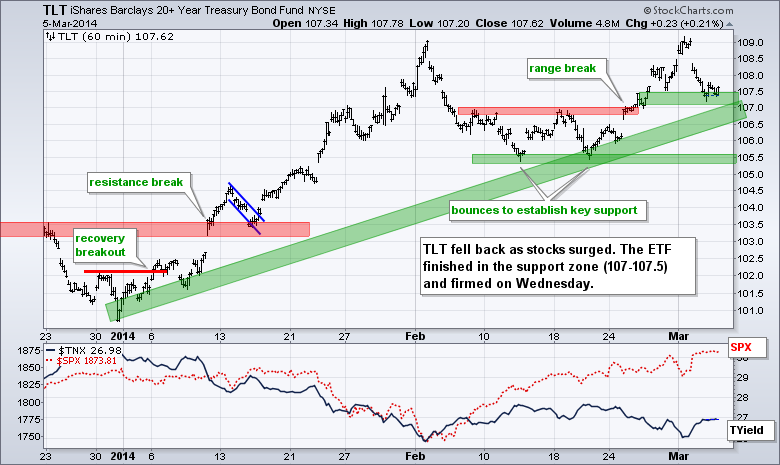
**************************************************************
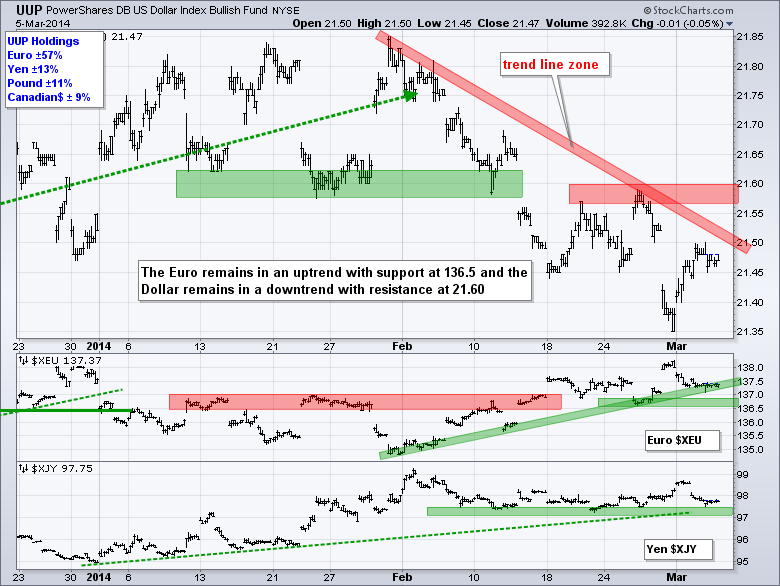
**************************************************************
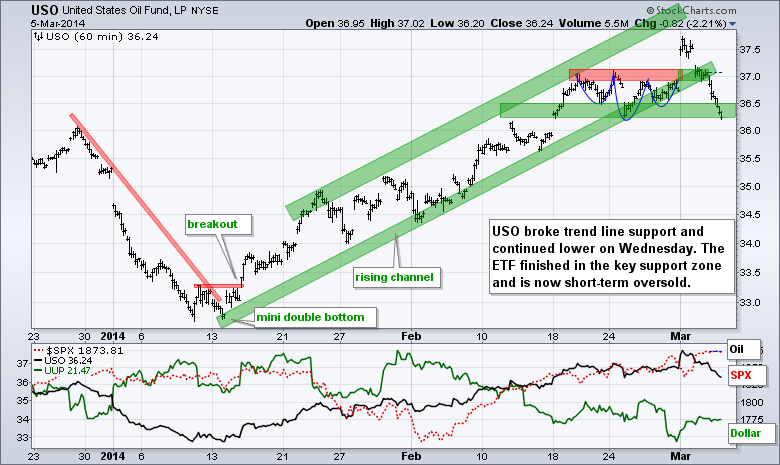
**************************************************************
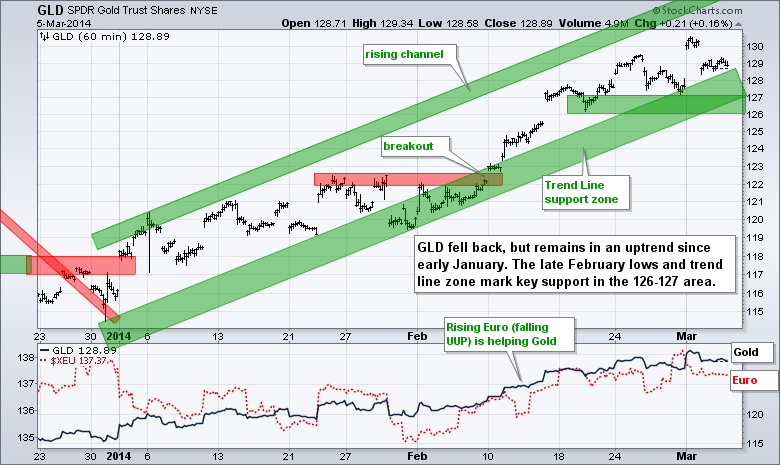
***************************************************************
Key Reports and Events (all times Eastern):
Thu - Mar 06 - 07:30 - Challenger Job Report
Thu - Mar 06 - 08:30 - Initial Jobless Claims
Thu - Mar 06 - 08:30 - Continuing Claims
Thu - Mar 06 - 10:00 - Factory Orders
Thu - Mar 06 - 10:30 - Natural Gas Inventories
Fri - Mar 07 - 08:30 - Employment
Charts of Interest: Tuesday and Thursday
This commentary and charts-of-interest are designed to stimulate thinking. This analysis is
not a recommendation to buy, sell, hold or sell short any security (stock ETF or otherwise).
We all need to think for ourselves when it comes to trading our own accounts. First, it is
the only way to really learn. Second, we are the only ones responsible for our decisions.
Think of these charts as food for further analysis. Before making a trade, it is important
to have a plan. Plan the trade and trade the plan. Among other things, this includes setting
a trigger level, a target area and a stop-loss level. It is also important to plan for three
possible price movements: advance, decline or sideways. Have a plan for all three scenarios
BEFORE making the trade. Consider possible holding times. And finally, look at overall market
conditions and sector/industry performance.

